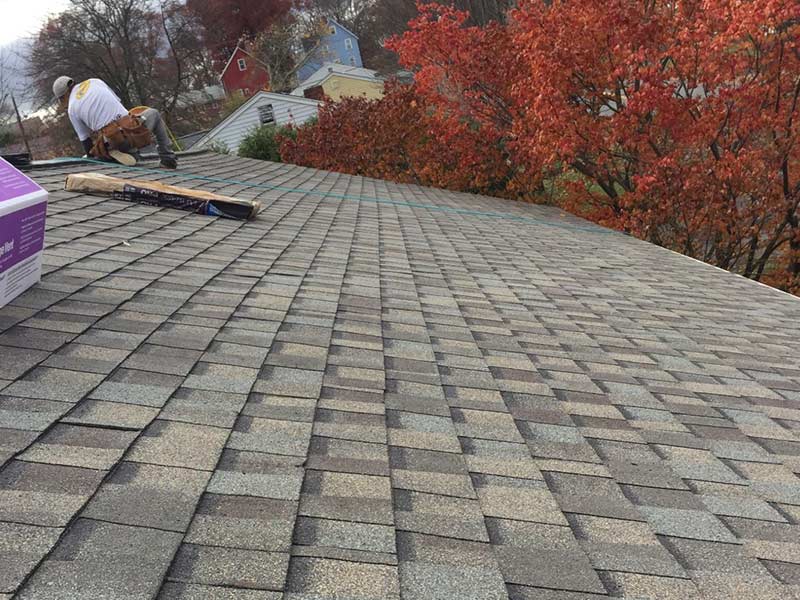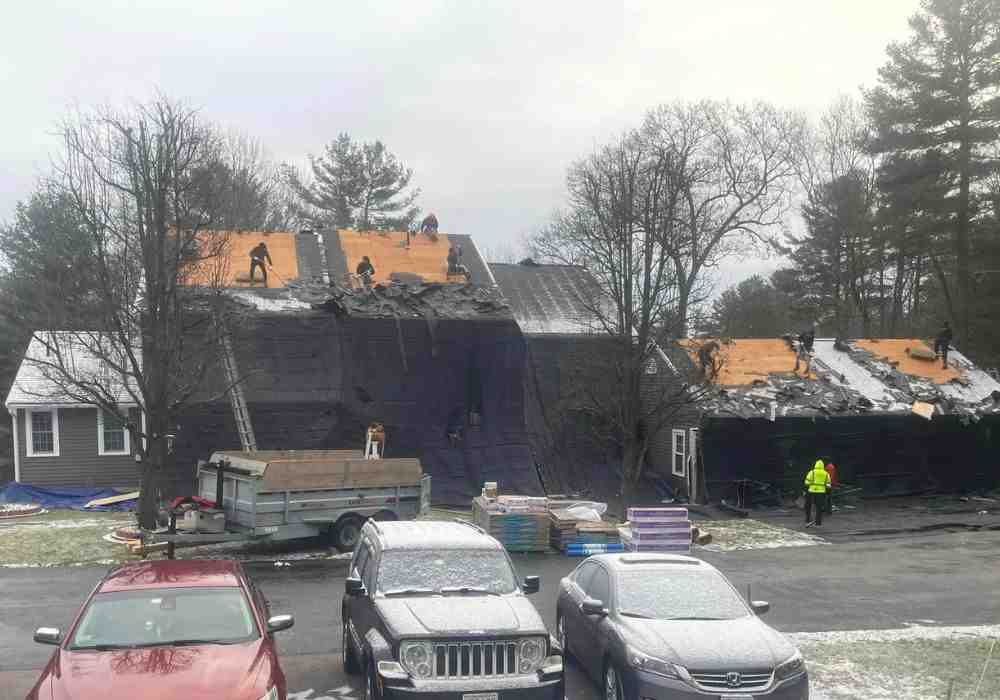How often should a roof be replaced? This is a question every homeowner should consider to protect their home’s value. While there’s no one-size-fits-all answer, several factors such as roof material, climate, and maintenance impact how long a roof lasts. Here’s a quick guide:
- Asphalt Shingles: 20-30 years
- Metal Roofs: 40-70 years
- Tile Roofs: 50-100 years
- Slate Roofs: 80-100 years
Routine maintenance, like inspecting for damage and cleaning gutters, can extend your roof’s lifespan and delay the need for a replacement.
I’m Kevin McLaughlin, owner of Heritage Exteriors LLC. With over three decades of experience in home improvement, I specialize in roofing and have seen how essential it is to know how often should a roof be replaced. Let’s dive deeper into understanding the factors that control this timeline.

Signs You Need a New Roof
Knowing when to replace your roof is crucial for maintaining your home’s integrity. Here are some key signs to watch for:
Roof Age
The age of your roof is a strong indicator of its remaining lifespan. Asphalt shingles, the most common roofing material, generally last 20-30 years. If your roof is approaching this age, it might be time to start planning for a replacement.
Damaged Shingles
Shingles should lie flat against your roof. If you notice any curling, buckling, or missing shingles, it’s a sign of substantial wear. Inspect your gutters for shingle granules; roofs nearing the end of their life tend to shed these easily.

Bald Spots
Over time, shingles can lose their granules, leading to bald spots. These granules protect your roof from the sun’s rays. Without them, your shingles can warp and deteriorate faster.
Plant Life
If you see moss or algae growing on your roof, it’s trapping moisture. This can lead to rot and decay. While small patches can be cleaned, extensive growth may indicate it’s time for a new roof.
Sagging Roof
A sagging roof is a serious issue often caused by structural problems like severe water damage or a broken rafter. If you notice any sagging, call a professional immediately.
Roof Leaks
Water stains on your ceiling or walls are clear signs of a leaky roof. Ignoring leaks can lead to mold growth and structural damage. It’s essential to address leaks promptly to avoid costly repairs.
Holes in Roof
Visible holes or punctures are an obvious sign that your roof needs attention. These can be caused by falling branches, severe weather, or wear and tear. Holes allow water to enter your home, causing damage.
Shingle Granules in Gutters
Finding a significant amount of shingle granules in your gutters is a red flag. These granules protect your shingles from UV rays. When they start to wear off, your roof’s lifespan is nearing its end.
By keeping an eye out for these signs, you can better determine how often should a roof be replaced. Next, let’s explore the factors that affect your roof’s lifespan.
How Often Should a Roof Be Replaced?
The lifespan of your roof depends on various factors like the type of material, climate, and maintenance. Here’s a breakdown:
Asphalt Shingles
Asphalt shingles are the most common roofing material due to their affordability. They typically last 20-30 years. However, in hotter climates, their lifespan can be shorter. Regular maintenance, such as cleaning gutters and inspecting for damage, can help extend their life.
Metal Roofs
Metal roofs are known for their durability and energy efficiency. They can last anywhere from 40-70 years. Metal roofs reflect sunlight, making them ideal for hot climates. They require less maintenance compared to other materials, but it’s still important to check for rust and loose panels.
Tile Roofs
Tile roofs, which include clay and concrete tiles, are incredibly durable. They can last 50-100 years. These roofs are excellent in hot climates as they naturally repel heat. While they require minimal maintenance, it’s crucial to inspect them for cracks and replace any broken tiles promptly.
Slate Roofs
Slate roofs are made from natural stone and are often found on high-end homes. They are the most durable, with a lifespan of 80-100 years. Slate roofs require professional installation and minimal maintenance. However, they can be brittle, so it’s essential to avoid walking on them.
At Heritage Exteriors LLC, we understand that replacing a roof is a significant investment. Knowing how often should a roof be replaced can help you plan and budget for this essential home maintenance task.
Next, let’s delve into the factors that affect your roof’s lifespan.
Factors Affecting Roof Lifespan
Climate Impact
The climate where you live plays a huge role in your roof’s lifespan. In hot climates, roofs can deteriorate faster due to intense sun exposure. This can cause materials to dry out and crack.
Humid climates bring their own challenges. Moisture can lead to mold, mildew, and rot, especially if your roof isn’t well-ventilated.
Severe weather like hailstorms, high winds, and heavy snowfall can also damage your roof. After such events, it’s smart to inspect your roof for any signs of damage.
Maintenance Practices
Regular maintenance can significantly extend the life of your roof. Here are some key practices:
- Regular Inspections: Check your roof at least once a year. Look for damaged shingles, leaks, and other signs of wear.
- Gutter Cleaning: Clogged gutters can cause water to back up and seep under your roof, leading to rot and leaks. Clean them regularly.
- Tree Trimming: Overhanging branches can fall and damage your roof, or rub against it and wear down the materials. Keep trees trimmed back.
Installation Quality
The quality of your roof installation is crucial. Poor installation can lead to a shorter lifespan and more frequent repairs. Here are some factors to consider:
- Professional Installation: Always hire experienced, reputable contractors. Poor workmanship can lead to leaks and other issues.
- Sub-Roof Condition: The sub-roof, or decking, must be in good condition. If it’s weak or damaged, it won’t support the roof properly.
- Sealing Peaks and Valleys: Properly sealing these areas prevents water from seeping in and causing damage.
Understanding these factors can help you take better care of your roof, ensuring it lasts as long as possible.
Next, let’s answer some frequently asked questions about roof replacement.
Frequently Asked Questions about Roof Replacement
How do you know it’s time to replace your roof?
Knowing when to replace your roof can save you from bigger, costlier problems down the road. Here are some signs to watch out for:
- Water Damage: If you notice water stains on your ceilings or walls, it’s a clear indicator of a leak. Left unchecked, this can lead to mold and mildew growth.
- Moisture Marks: Dark streaks or spots on the underside of your roof decking in the attic can signal moisture intrusion. This often means your roof is compromised.
- Peeling Paint: Paint peeling from walls or ceilings can be a sign of moisture seeping in from the roof. This is often due to poor ventilation or leaks.
- Damp Rafters: If your attic rafters feel damp or have signs of mold, it’s likely that your roof is leaking and needs attention.
What is the typical life expectancy of a roof?
The lifespan of a roof can vary widely based on the materials used:
- Asphalt Shingles: Typically last 20-30 years. They are affordable and common, but may need more frequent replacement in harsh climates.
- Metal Roofs: These can last 40-70 years. They are durable and energy-efficient, making them a popular choice for long-term investment.
- Tile Roofs: Often last 50-100 years. Both clay and concrete tiles are resilient and aesthetically pleasing, though they come with a higher price tag.
- Slate Roofs: Known for their longevity, slate roofs can last 80-100 years. They are made from natural stone and are often found on high-end homes.
How many times can you reshingle a roof?
When it comes to reshingle a roof, there are some important limitations to consider:
- Two Layers Limit: Most building codes allow for a maximum of two layers of shingles. Adding more layers can make the roof too heavy and unsafe.
- Full Tear-Off: If your roof already has two layers of shingles, a full tear-off is necessary. This involves removing all existing shingles before installing new ones.
- Weight Support: The structure of your home must be able to support the weight of additional shingles. Always consult a professional to ensure your home can handle it.
Understanding these factors can help you make informed decisions about how often should a roof be replaced and when to consider a full replacement versus minor repairs.
Conclusion
Replacing your roof is crucial for maintaining the safety and value of your home. A well-maintained roof protects your family and belongings from the elements, preventing issues like leaks, mold, and structural damage.
Why is Roof Replacement Important?
A damaged or aging roof can lead to serious problems. For example, moisture can seep into your attic, causing insulation to become wet and ineffective. This not only reduces energy efficiency but can also lead to mold growth, which poses health risks.
Protecting Home Value
A new roof can significantly boost your home’s value. Prospective buyers are more likely to invest in a home with a well-maintained roof, knowing they won’t face immediate repair costs. Plus, a new roof can enhance your home’s curb appeal, making it more attractive on the market.
Why Choose Heritage Exteriors LLC?
At Heritage Exteriors LLC, we understand the importance of a sturdy, reliable roof. Our roofing services cover everything from minor repairs to full replacements. We use high-quality materials and expert craftsmanship to ensure your roof stands the test of time.
Customer Experience
We pride ourselves on delivering exceptional customer service. From the initial consultation to the final inspection, our team is committed to your satisfaction. We carry workers’ compensation and general liability insurance specifically for roofing, so you can rest easy knowing you’re protected.
System’s Approach to Service
Our approach to roofing isn’t just about installing shingles; it’s about creating a comprehensive roofing system. This includes flat and sloped roofs, ice and water barriers, and roof ventilation systems. This holistic approach ensures that every aspect of your roof works together seamlessly to protect your home.
For more information about our roofing services and to schedule a consultation, visit our Roofing Services page. Experience the Heritage Difference today!


